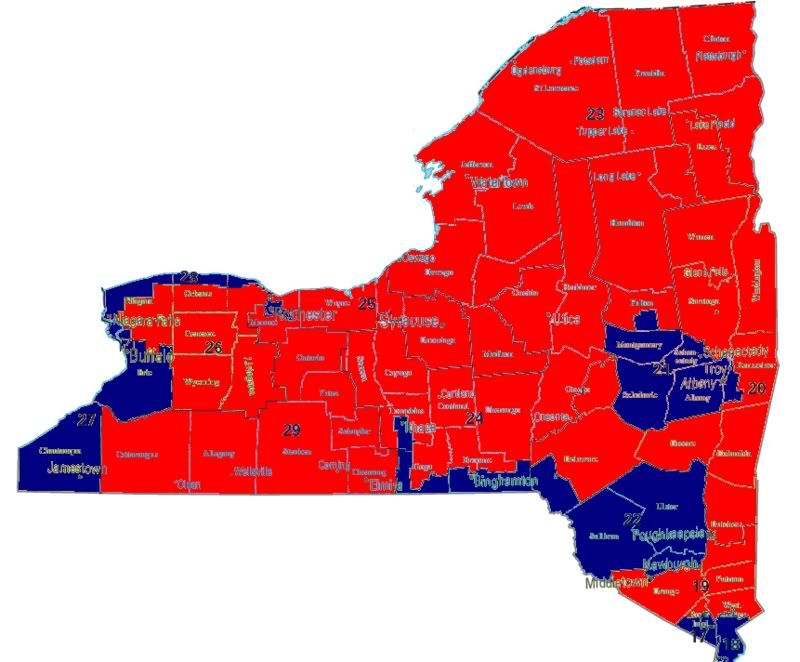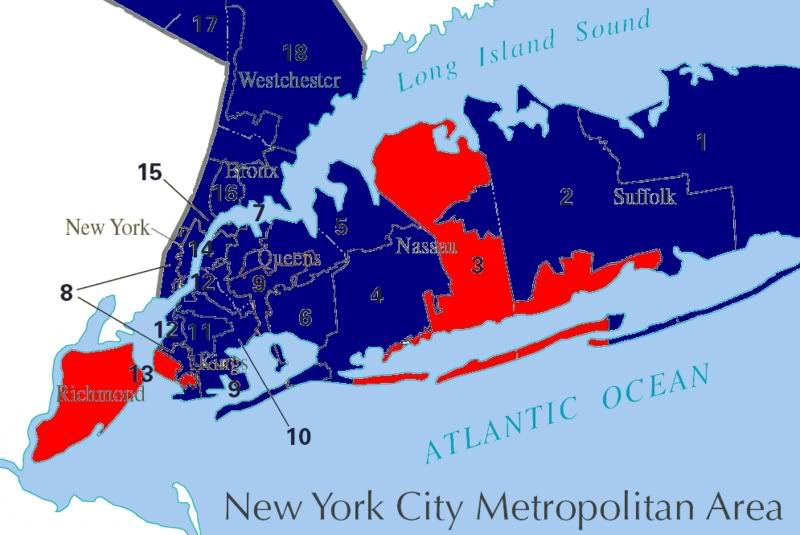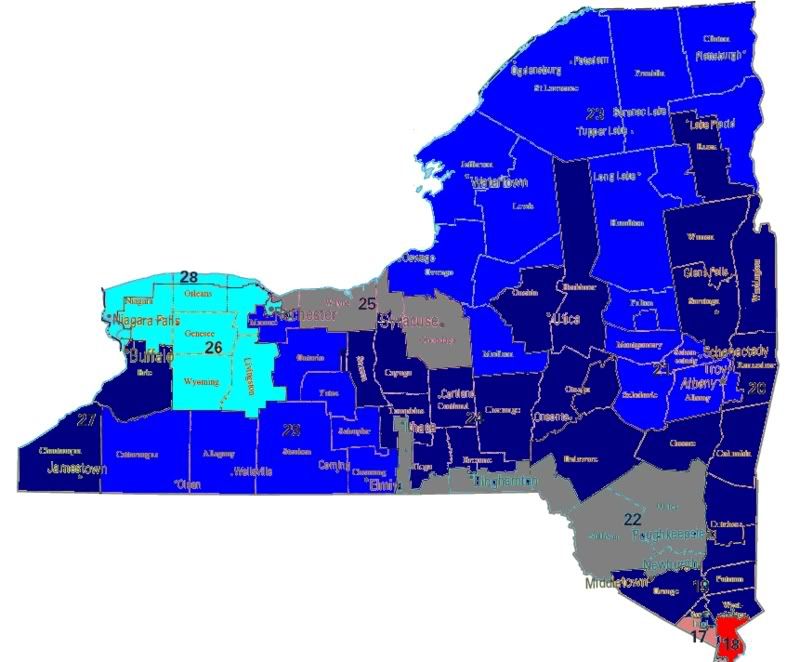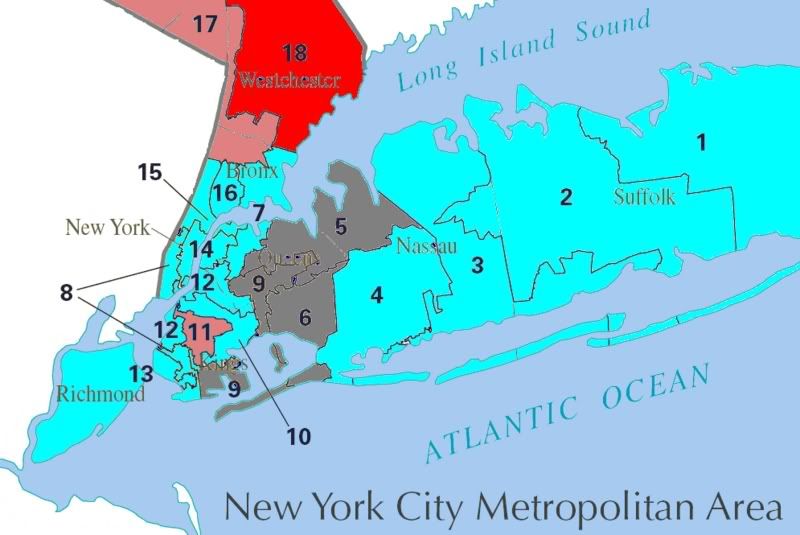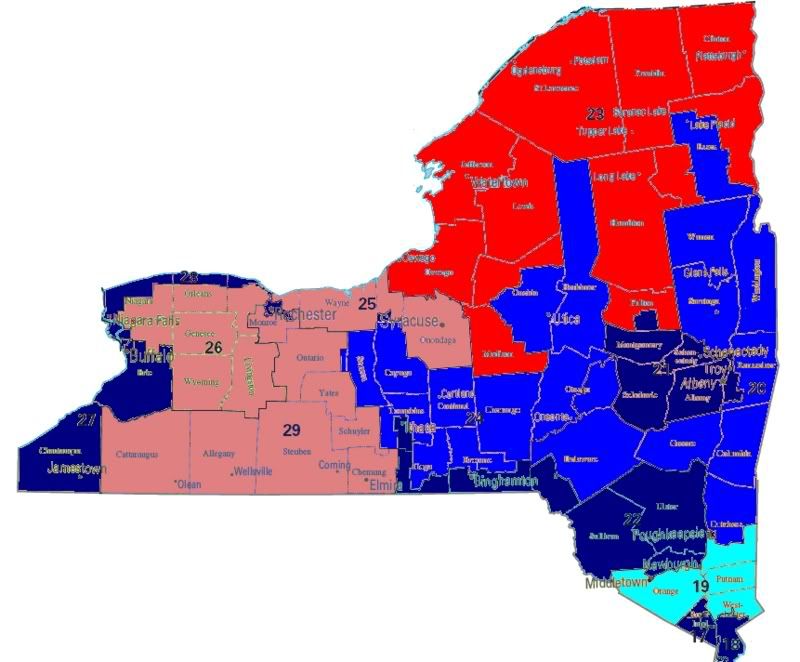On Oct. 24th, 2006, Survey USA released the last batch of Senate approval ratings before the election. Who were the least popular senators facing re-election?
1. Santorum, -19% net approval
2. DeWine, -17% net approval
3. Burns, -16% net approval
4. Menendez, -13% net approval
5. Talent, -5% net approval
6. Chafee, -1% net approval
7. Kyl, 0% net approval
8. Allen, +1% net approval
Are approval ratings a good way of determining which incumbents are vulnerable? DUH, YES!
Below the flip, let’s see how the class of 2008 is looking. Hey, do you smell that? Smells like… Wayne Allard. Yeah, he’s a little over-ripe. Prepare for harvest!
Bottom of the class: Least popular senators, class of 2008:
1. Frank Lautenberg (D-NJ), -12% net approval
2. James Inhofe (R-OK), -9% net approval
3. Wayne Allard (R-CO), -4% net approval
4. John Cornyn (R-TX), -3% net approval
Paging Brad Henry, Mark Udall, and Chet Edwards… strong challengers wanted!
If we managed to pick off George Allen, we can defeat Inhofe and Cornyn with the right challenger. Yes, we can, even in Texas and Oklahoma.
Of course, fortunes can change… One year before that poll was taken, on Oct. 17, 2005, Lincoln Chafee had 19% net approval. Don’t let today’s approval rates discourage you too much, because things can change. Chafee’s steady, quiet fall from grace proves that. John Kyl had a net approval of +17% in August – a good, hard campaign can do a lot. George Allen had a +31% approval rating in December.
Now, for God’s sake, can we please stop saying that Lautenberg is safe? He’s overdue for his next retirement. If you want to see him re-elected, he’s going to have to save a few drowning puppies or something.
So, what about the rest of the class?
Lamar Alexander (R-TN), +3%
Norm Coleman (R-MN), +5%
Pat Roberts (R-KS), +6%
Carl Levin (D-MI), +6%
Saxby Chambliss (R-GA), +7%
Tom Harkin (D-IA), +7%
Mary Landrieu (D-LA), +10%
Lindsey Graham (R-SC), +10%
Gordon Smith (R-OR), +11%
John Sununu (R-NH), +11%
Mitch McConnell (R-KY), +12%
Richard Durbin (D-IL), +13%
John Kerry (D-MA), +14%
Jeff Sessions (R-AL), +19%
Joe Biden (D-DE), +19%
Elizabeth Dole (R-NC), +20%
Mark Pryor (D-AR), +24%
Michael Enzi (R-WY), +27%
Pete Domenici (R-NM), +31%
John Warner (R-VA), +31%
Max Baucus (D-MT), +31%
Ted Stevens (R-AK), +32%
Thad Cochran (R-MS), +33%
Larry Craig (R-ID), +33%
Jay Rockefeller (D-WV), +34%
Jack Reed (D-RI), +38%
Tim Johnson (D-SD), +46%
Susan Collins (R-ME), +48%
Conclusions:
1. I wouldn’t start worrying about Tim Johnson just yet. He’s almost as popular as Kent Conrad. Unless Gov. Mike Rounds challenges Johnson, this seat is safe. Against Rounds, I’d still give the edge to Johnson by a fair amount.
2. I wouldn’t get too excited about a Collins vs. Allen matchup. She’s almost as popular as Olympia Snowe. What’s Allen gonna do, knock her margin of victory down to 15%? Let’s hope she defects or retires.
3. Warner vs. Warner – competitive maybe, but not likely to be a win for Mark. Let’s hope John retires.
4. Max Baucus is safe. And I mean Kent Conrad safe.
5. Mark Pryor is safe. With Beebe as the new governor, it’s clear that Arkansas votes Dem on anything that isn’t Presidential.
6. John Sununu and Gordon Smith are good targets, if we can knock them down. They’re popular enough now, but a good candidate running a good campaign could knock either of them into vulnerability with some hard work.
7. Graham = Akaka. Those who don’t approve of his performance are probably not likely to vote for his opponent, either.
8. Landrieu is defensible. +10% is a good base to work from.
9. Harkin and Levin have a little work to do. Hopefully their majority status will raise their image some.
10. Saxby Chamblis and Pat Roberts ain’t untouchable! I’d rate them as Likely Republican now, but a great candidate could beat either. Yes, even in Kansas!
11. Lamar Alexander and Norm Coleman can be defeated.
12. Cornyn and Inhofe need conservative Dem challengers who will fight against these two incumbents. Do that, and we win.
13. Defense in New Jersey – maybe we should encourage Lautenberg to retire.
14. Allard’s going down!!!
